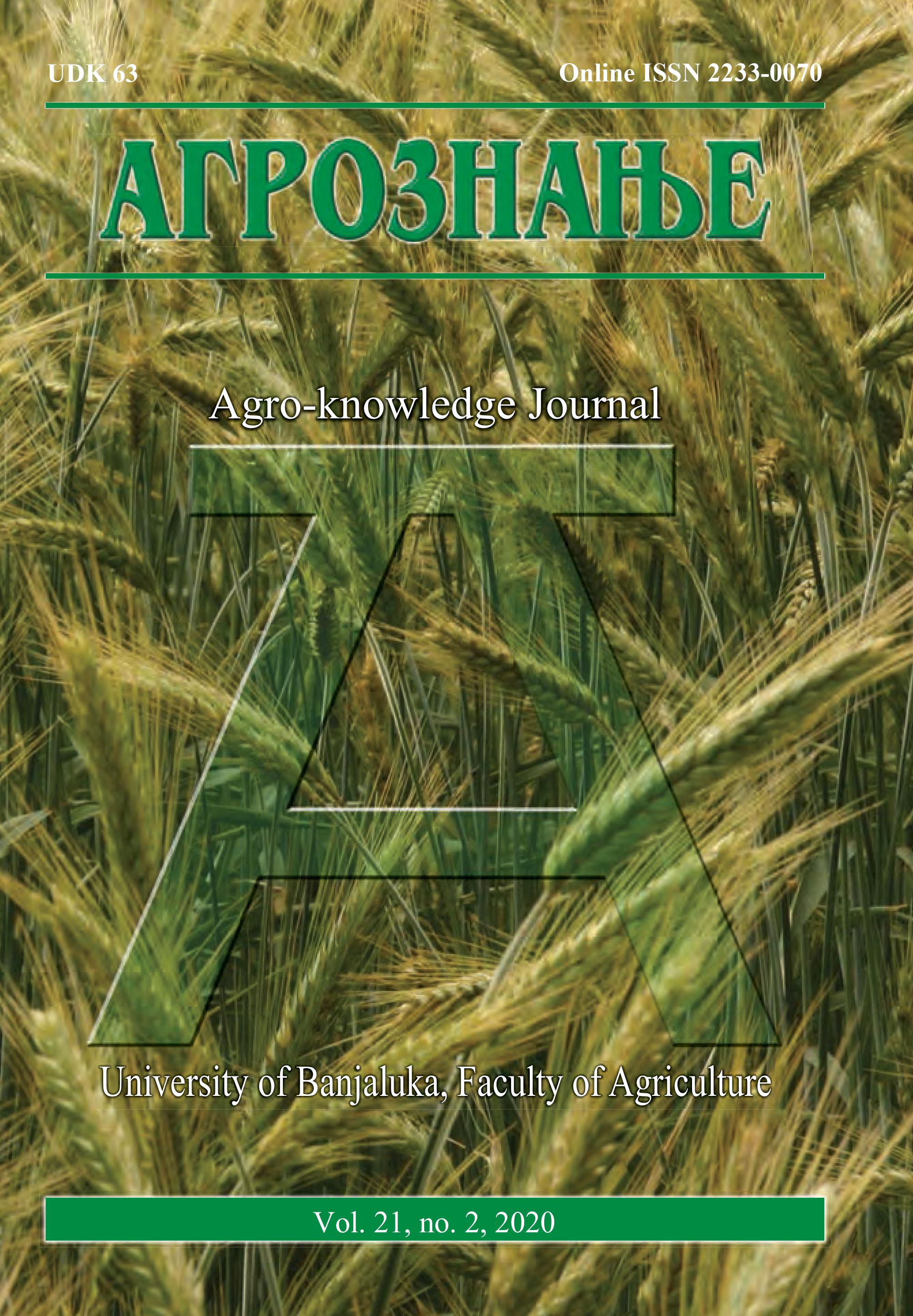Soil Suitability for Apple (Malus domestica) Cultivation within the Borders of the Municipality of Bužim
Погодност земљишта у границама општине Бужим за узгој јабука (Malus domestica)
DOI:
https://doi.org/10.7251/AGREN2002069IAbstract
The consequences of improper land management are long-term, inadequate for agricultural production, and reflected through the loss of land, reduced yields, soil erosion, etc. In order to determine the optimal role or suitability of the land for apple cultivation within the Bužim municipality, a survey was conducted according to the FAO method of AEZ (FAO, 1976), and based on the obtained results, an assessment of the suitability of the land for apple cultivation was carried out. It was found that a significant land portion of the total of 13,026.27 ha agricultural land within the Municipality of Bužim is suitable for fruit production marked from S1 to N suitability class.
Thus, the areas with the best graded class S1 cover only 1.23% or 159.52 ha, the S2 class occupies 5.51% (717.24 ha), the S3 class occupies 2.29% (298.24 ha). However, the largest areas are marked as the unfavourable N-class with 36.68% (4,772.60 ha). It is evident that pre-existing conditions for apple production within the municipality do exist. With the implementation of the necessary measures of soil/ land regulation, education of agricultural producers, and mindfulness of constraint factors hindering intensive production such as terrain slope, depth, rockiness and soil response, progress in production can be made.
Key words: municipality of Bužim, soil suitability, apple, AEZ.

